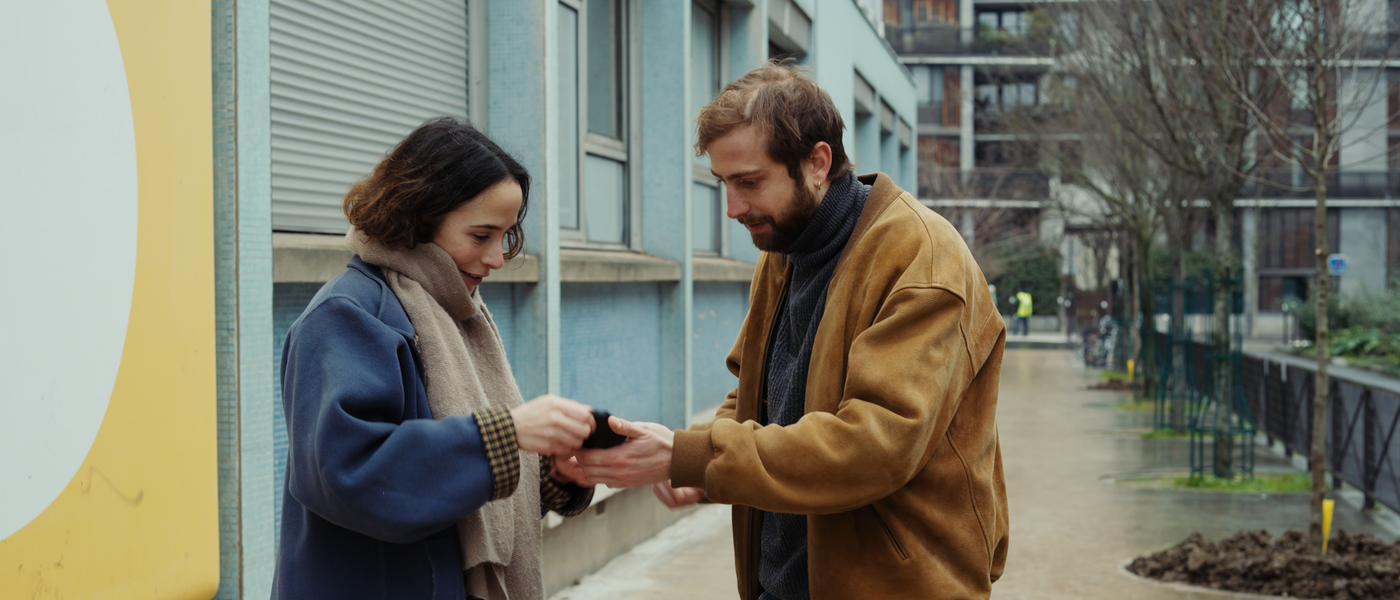Interview with Carmen Leroi, Free Drum Kit director
by Raphaëlle Pireyre

by Raphaëlle Pireyre
What imposes obligation in the present received and exchanged, is the fact that the thing received is not inactive. Even when it has been abandoned by the giver, it still possesses something of him.” As a practical application of Marcel Mauss’ essay The Gift, Free Drum Kit is a short anthropological essay of daily life that slides into the absurd. Lila wants to do an act of kindness by giving away his ex’s drum kit, but becomes trapped by her own contradictions. A game of giving and chance, where this instrument is unexpectedly returned to its sender - as hardly anyone plays that instrument - and this moral fable reminds us that an object’s value is not its price.
Interview with Carmen Leroi
A quirky moral comedy about the act of giving.
Upon listing an item on Leboncoin - the French Craigslist - I found myself asking questions that inspired this story. Those internal questions - the two voices of an inner monologue - eventually became two characters: Lila and Agathe, with wildly different temperaments.
I was also inspired by Eric Rohmer’s Four Adventures of Reinette and Mirabelle, which depicts two friends chatting about material and moral issues (giving to beggars, shoplifting). I personally find the question of giving extremely interesting: what lies behind the act of giving? Is it a sign of pure, selfless generosity? A way to ease one’s conscience? Must one reciprocate? Lila wants to do a good deed, but the moment she posts her ad on the website, she finds herself in increasingly crazy situations. I followed the threads of those situations all the way through, pushing them to the very limit to challenge the characters’ ideas and contradictions… Furthermore, the actresses fully embraced these very colourful characters. Hence this somewhat absurd and fantastical feeling.
The 13th arrondissement of Paris
Living in the 13th arrondissement, I find its diversity very cinematic. I love the high-rise buildings that are unlike the traditional image of Paris. Because the plot is quite dense, while editing, we decided to insert shots of these buildings (which we later reshot) to give the film more atmosphere and perspective. I guess it’s to offset the austerity of these high-rise buildings that the neighbourhood is dotted with splashes of colour (painted walls, street art). This must have inspired us, since we gradually paid more attention to them as we were preparing for the film; we started seeking colourful elements in the sets and costumes (yellow walls, green porticos, a blue bridge, etc.) which now shape the film’s visual identity.
Music
During editing, I thought of Maher Shalal Hash Baz, a large Japanese ensemble with the feel of a small amateur brass band, which I like. They play their own naive tunes, full of squeaks and wrong notes, giving the impression of something clumsily put together - yet, they convey something very touching and graceful.